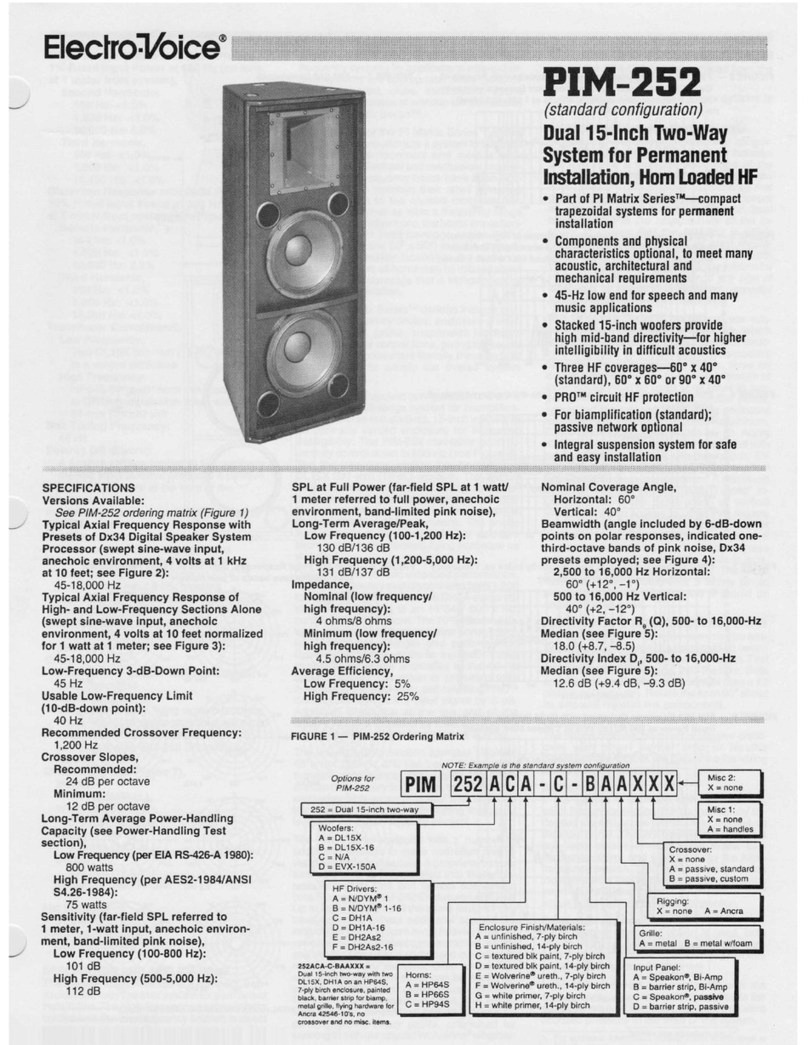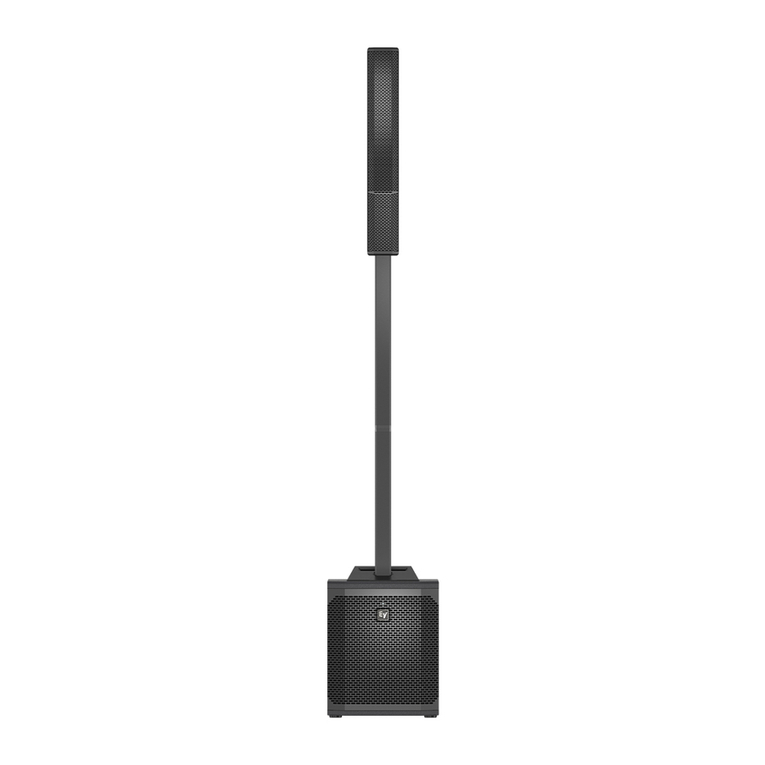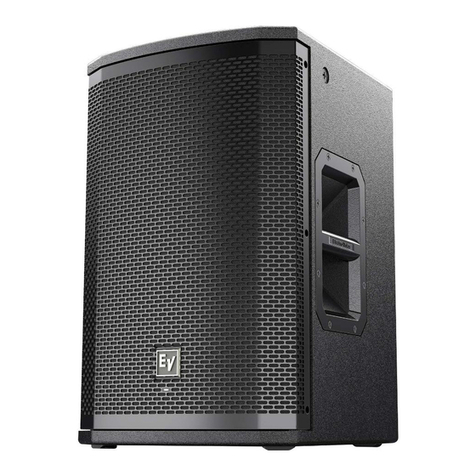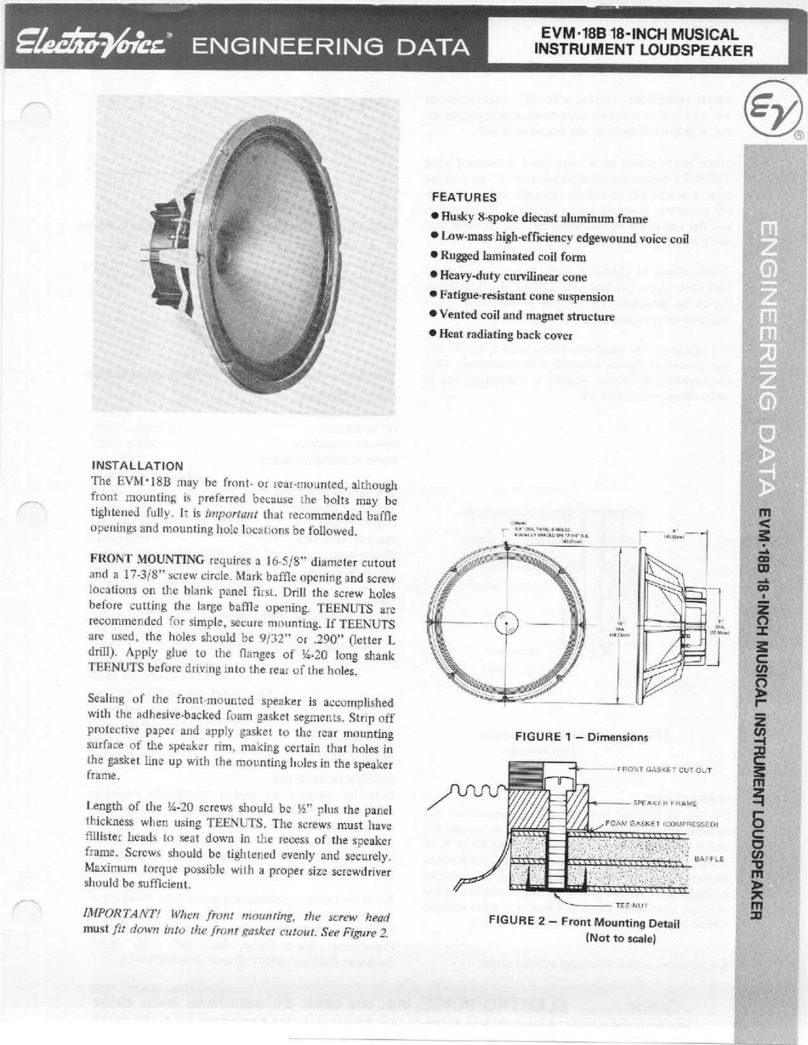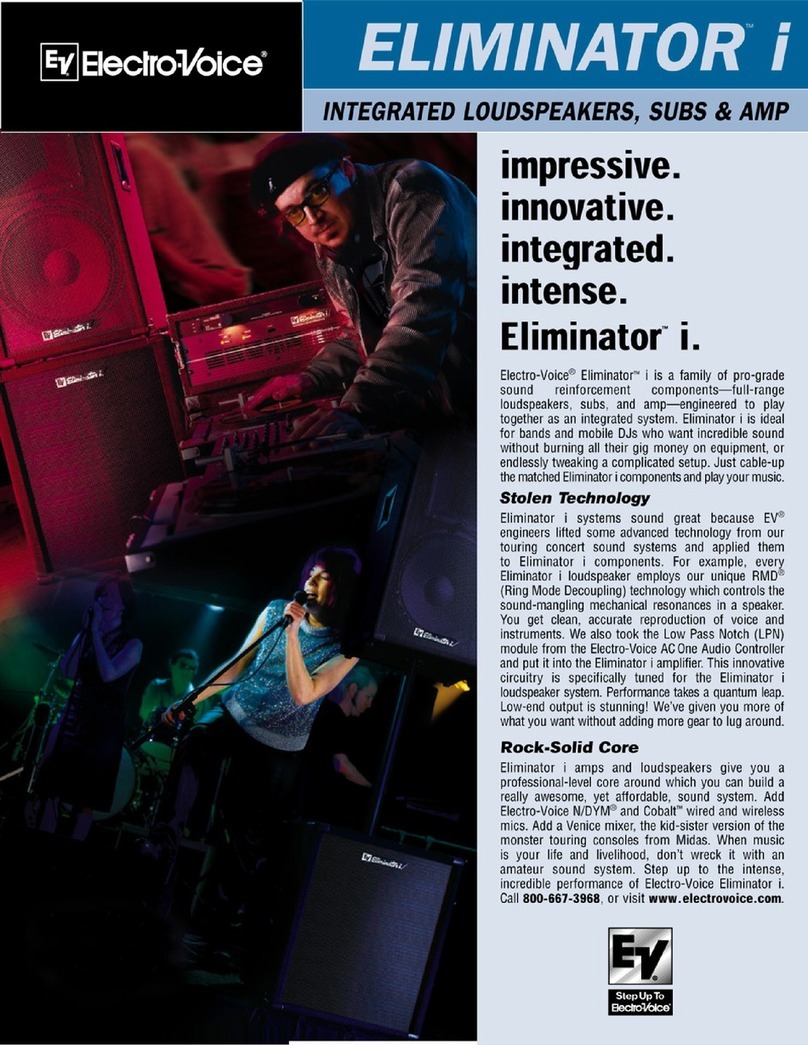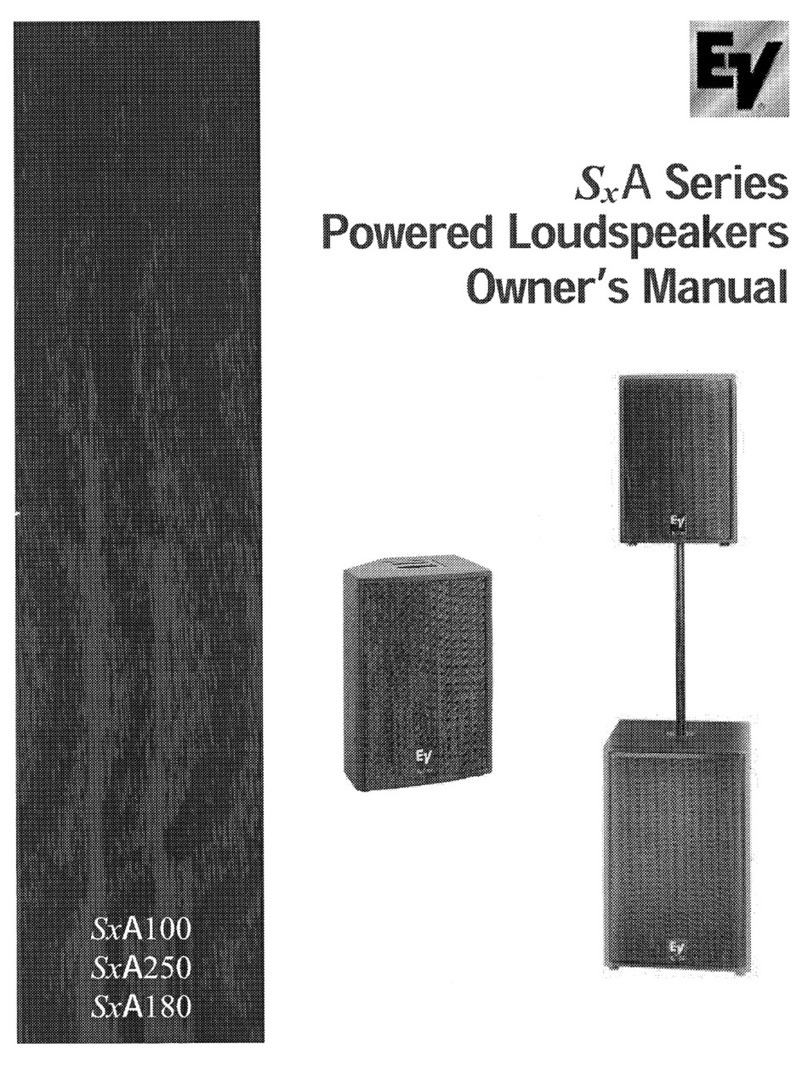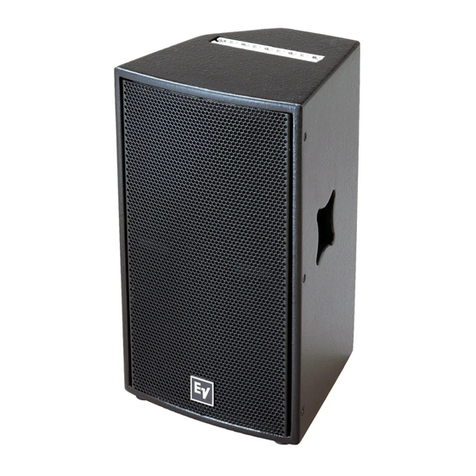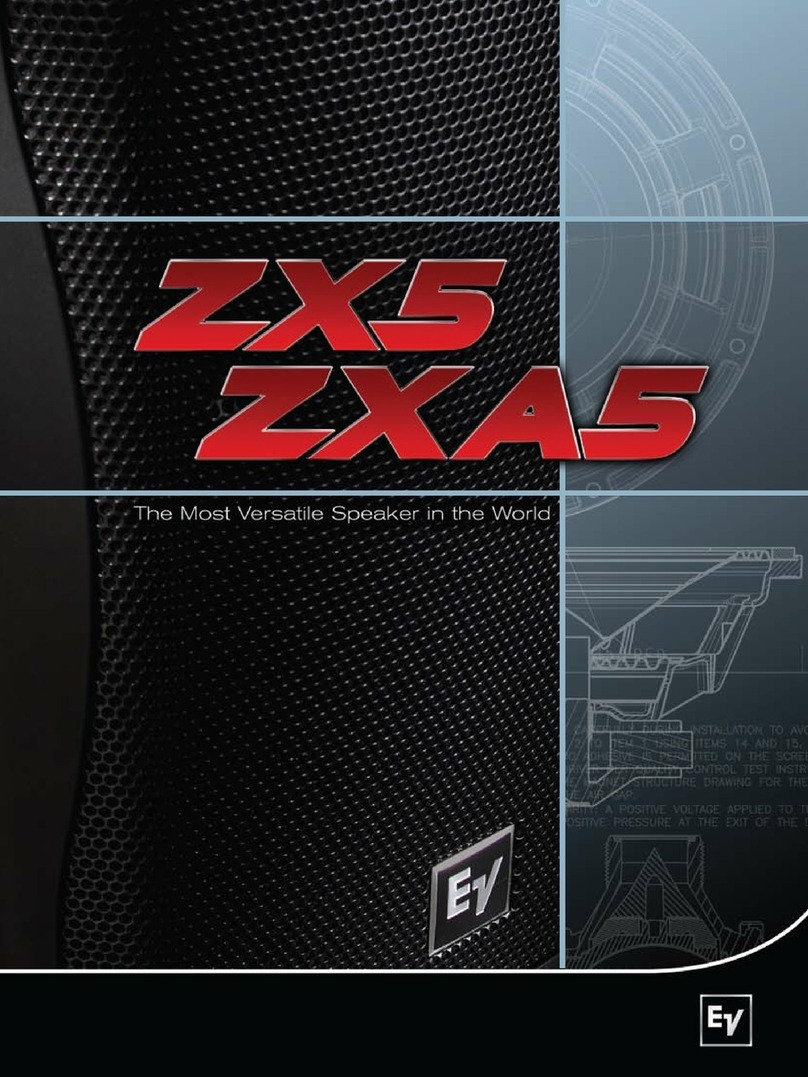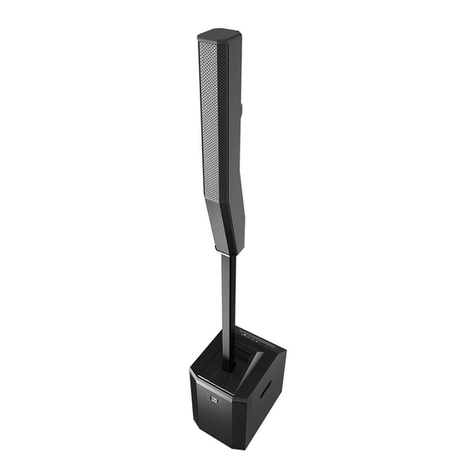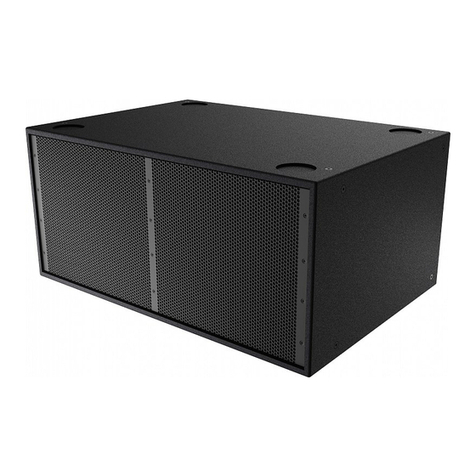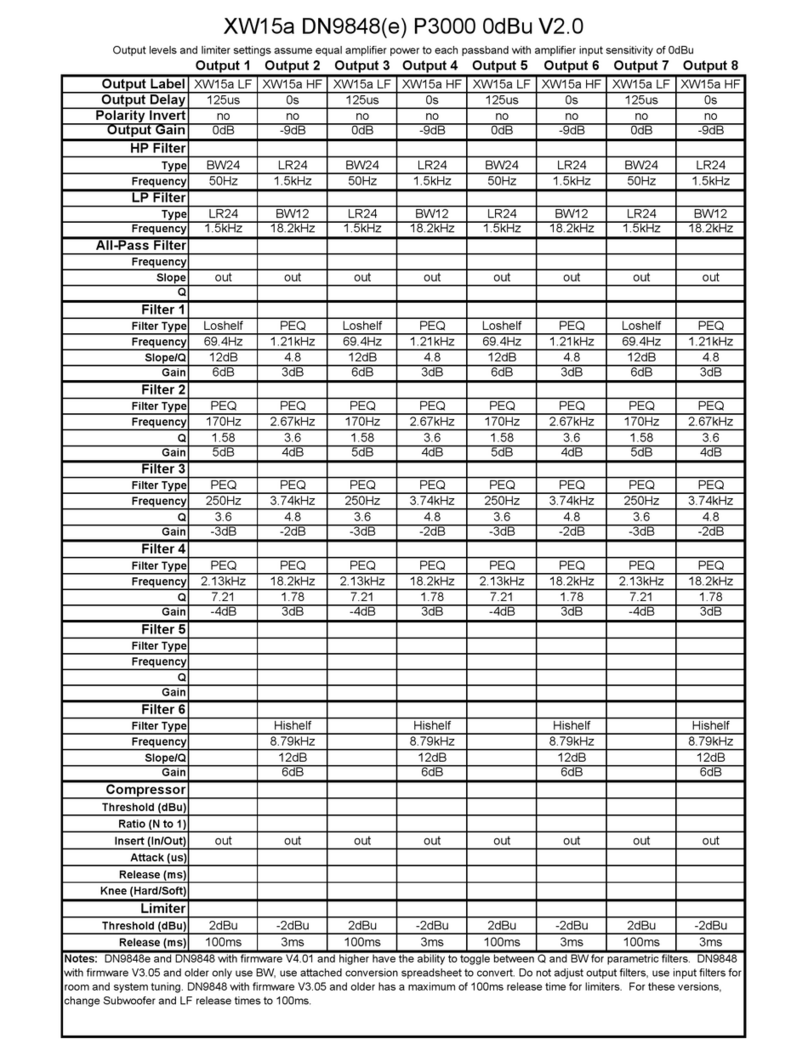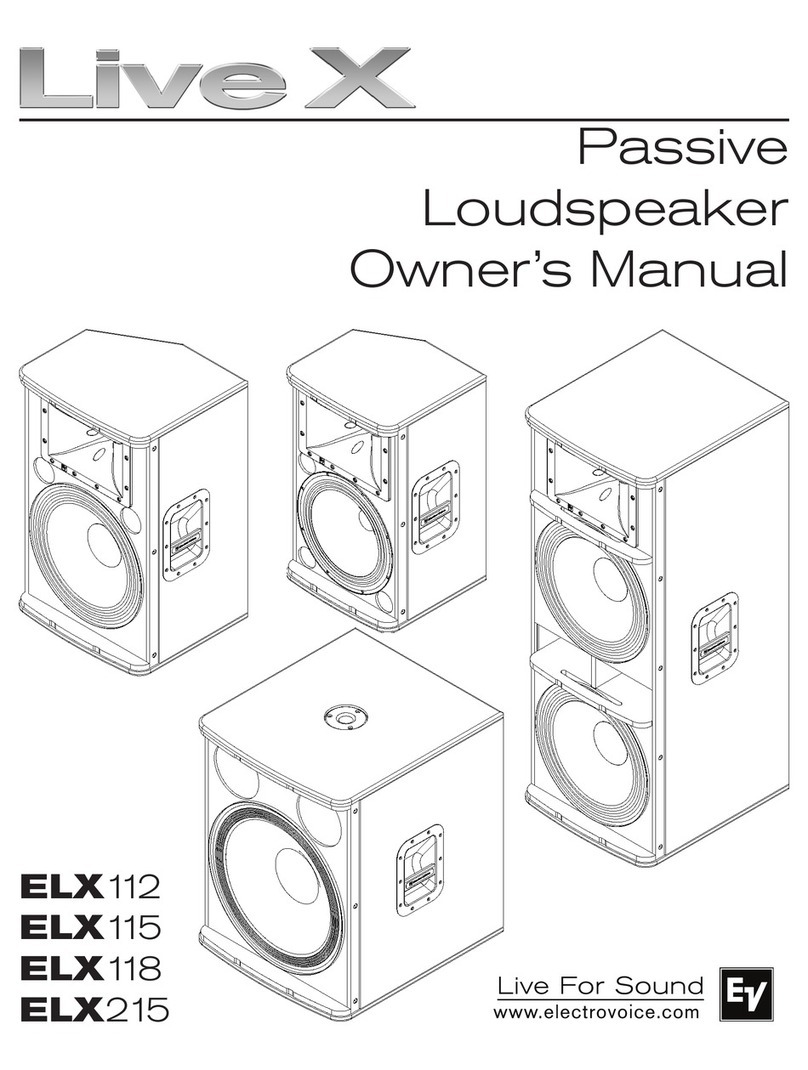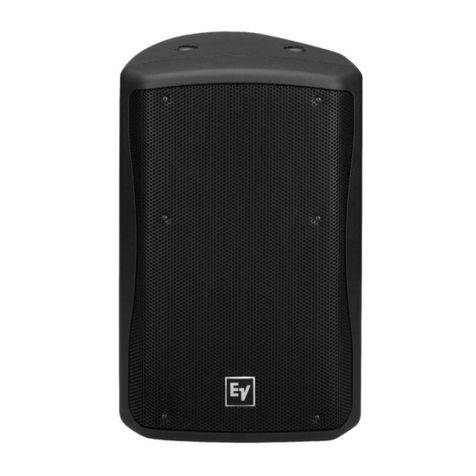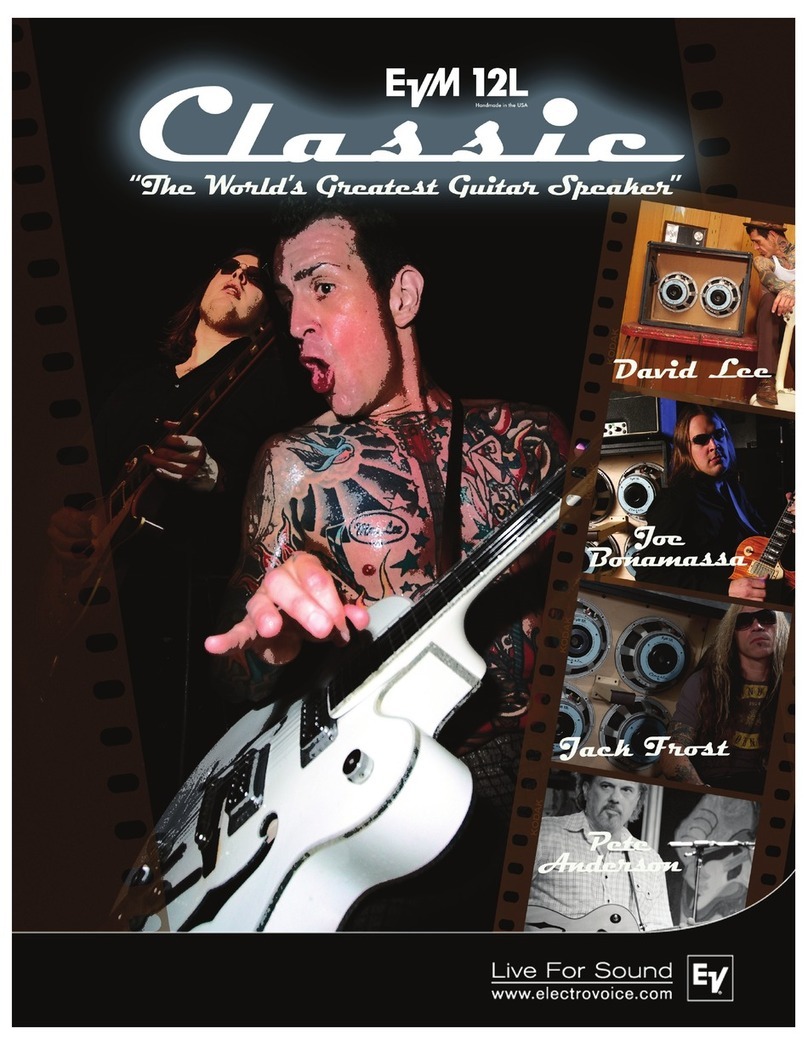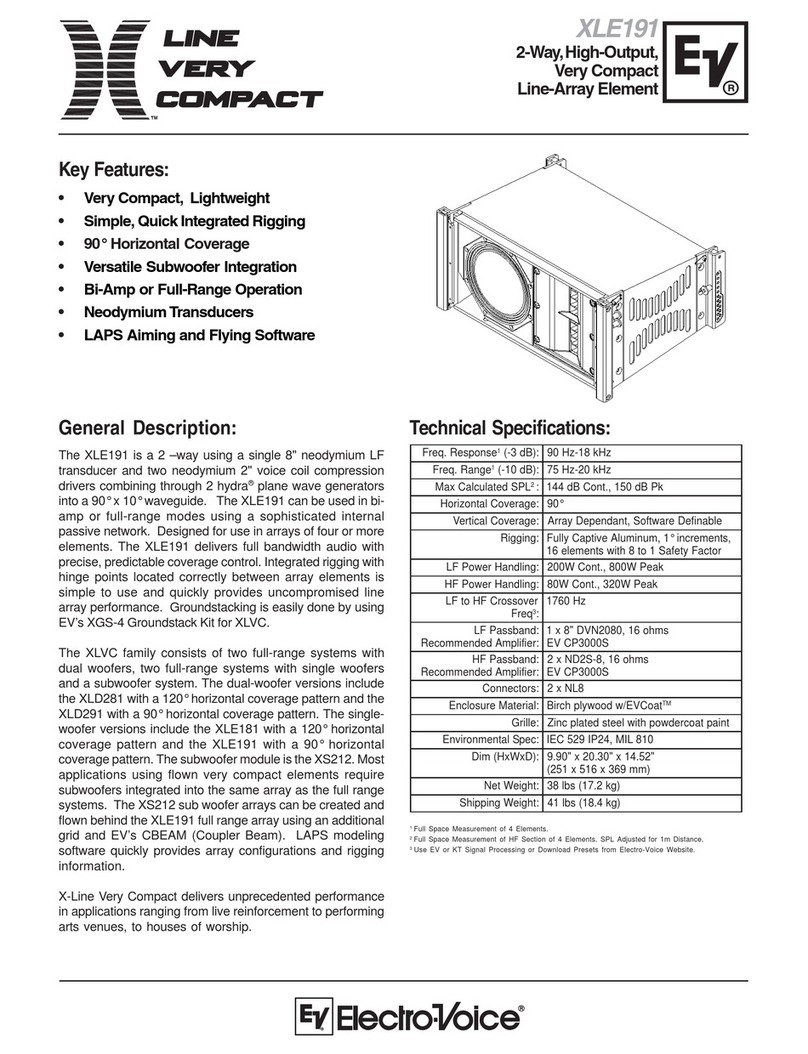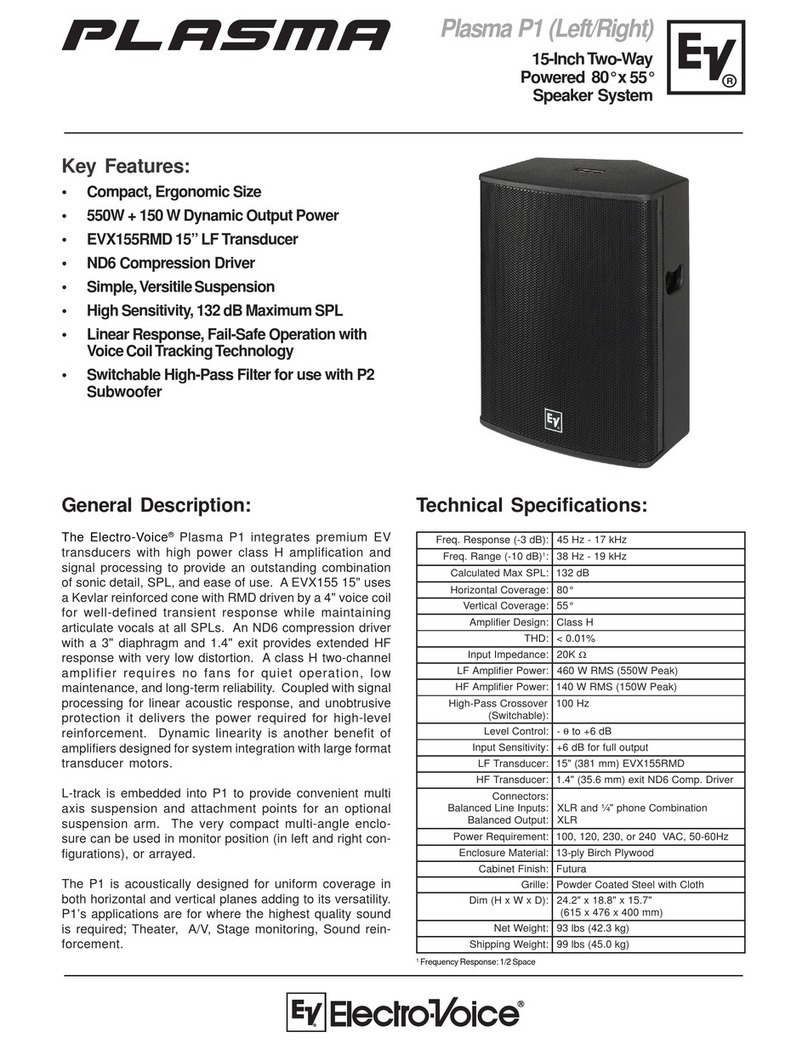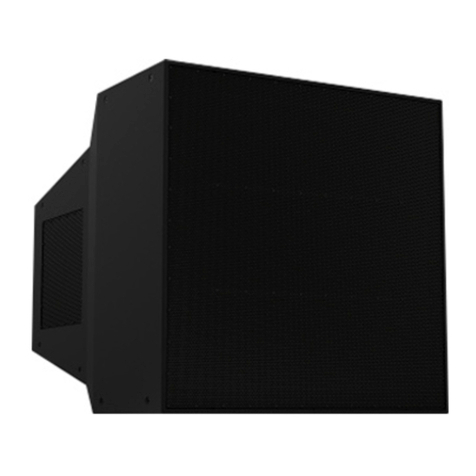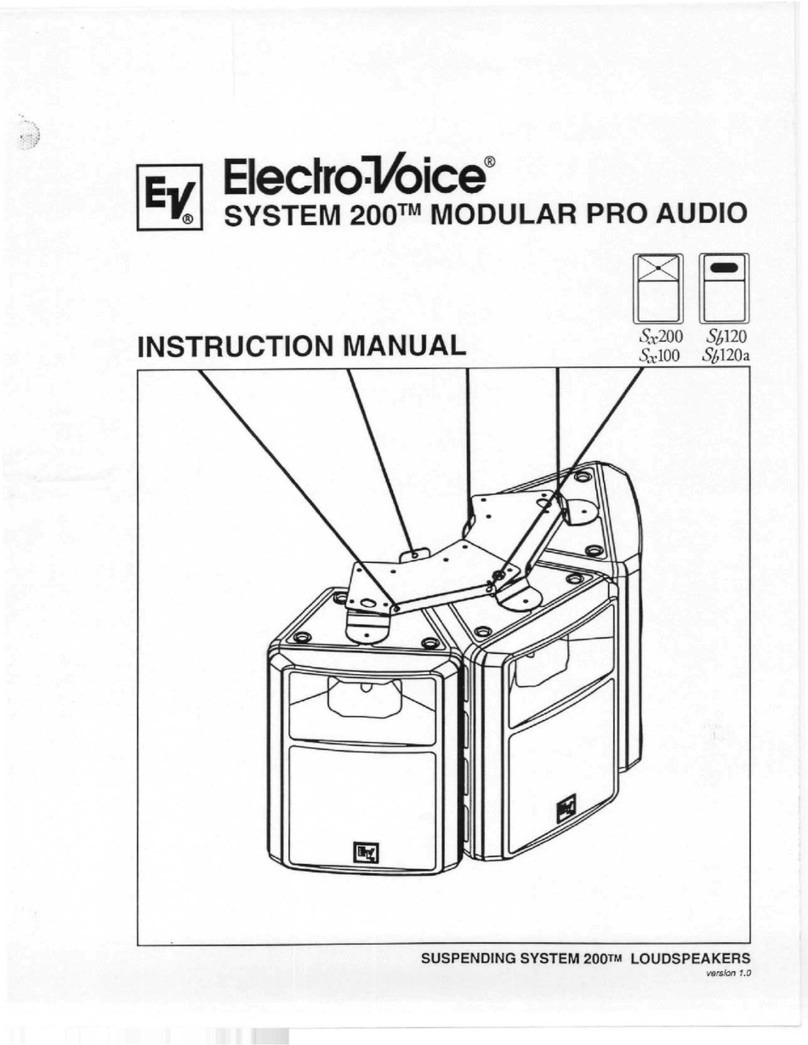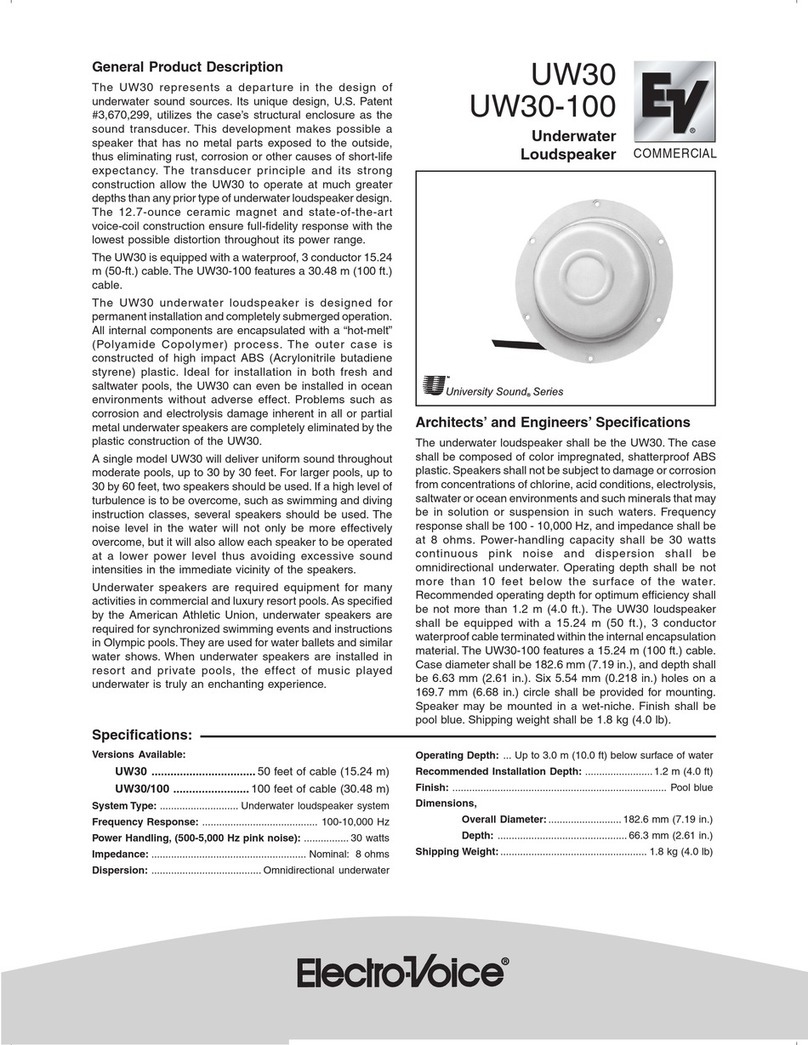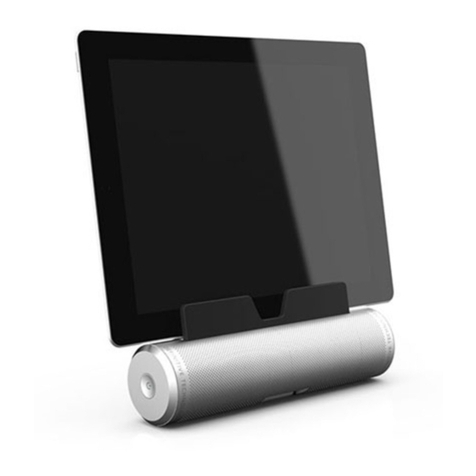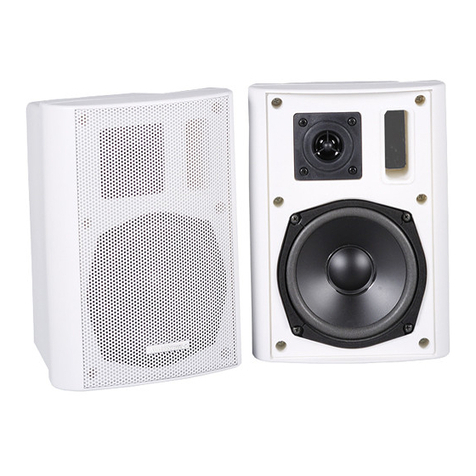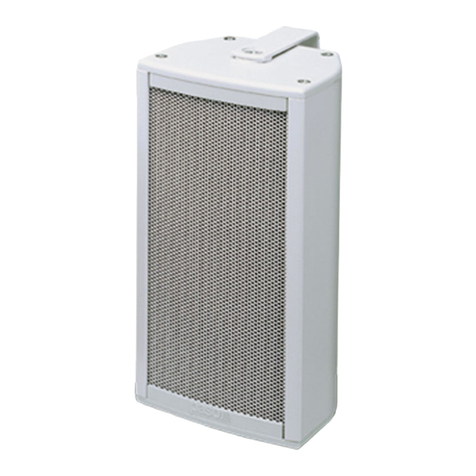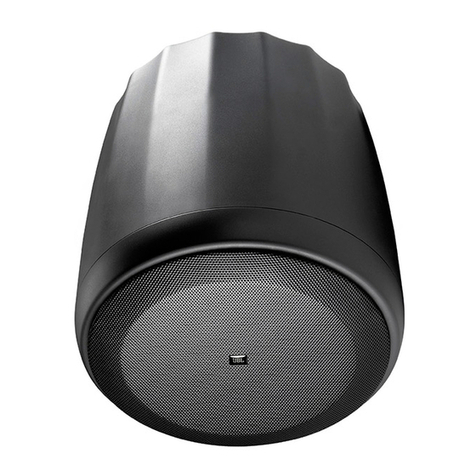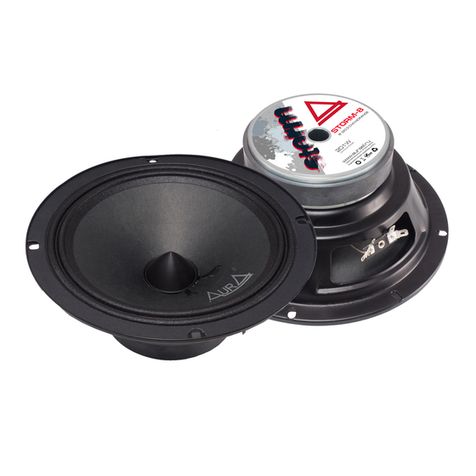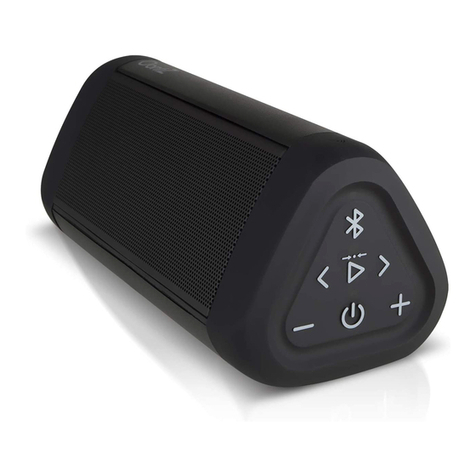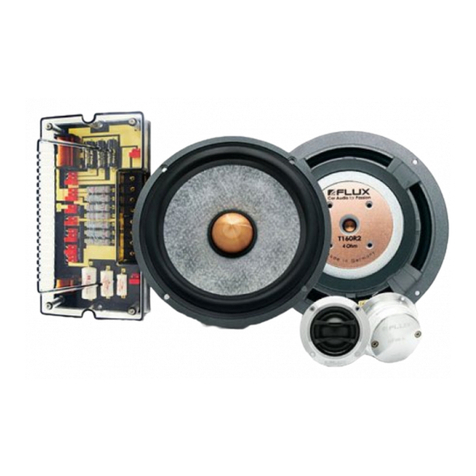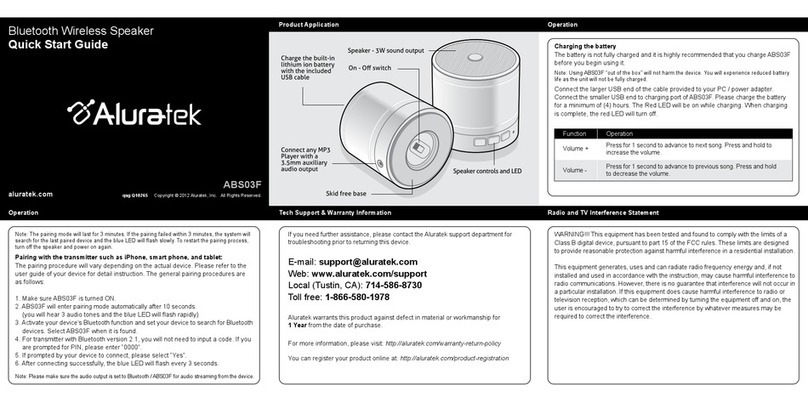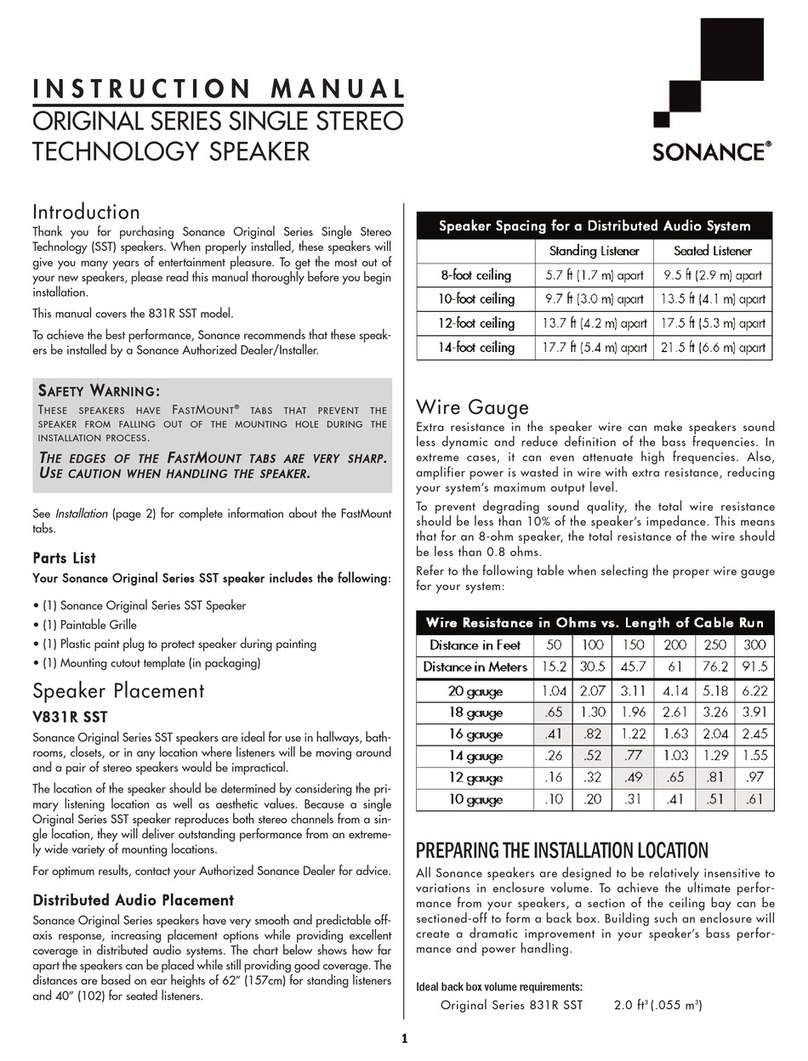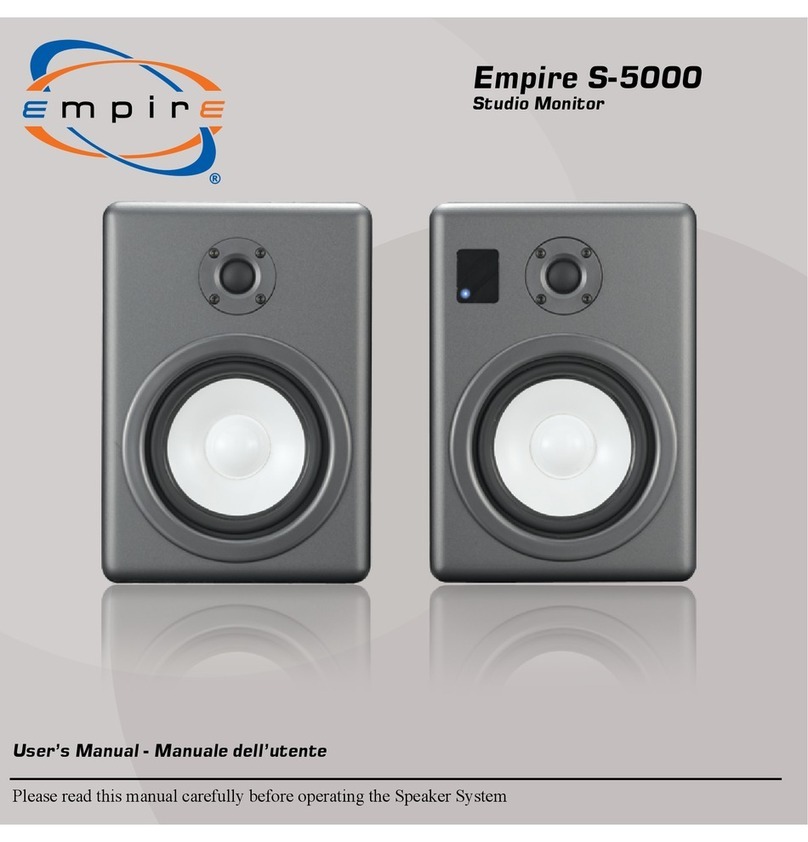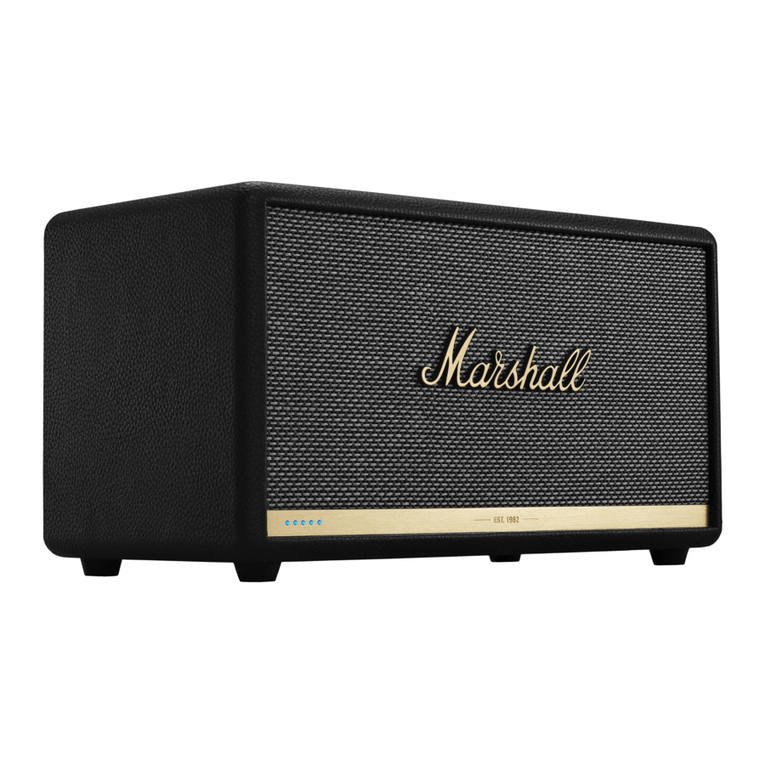
Sb121 300-Watt Nonpowered Bass Module
S
b
121 300-Watt Nonpowered Bass Module
propriate.Forhigherroll-offrates,lowercor-
ner frequencies are permissible and provide
essentially equivalent protection.
The sub output of the optional Xp200A elec-
tronic system controller provides a 24-dB-
per-octave roll-off at 37 Hz.
Suspending Sb121 Enclosures
WARNING: Suspending any object is po-
tentially dangerous and should only be at-
tempted by individuals who have a thor-
ough knowledge of the techniques and
regulations of rigging objects overhead.
Electro-Voice strongly recommends that
theSb121 be suspended takinginto account
all current national, federal, state and lo-
cal regulations.Itis theresponsibility of the
installertoensuretheSb121issafelyinstalled
in accordance with all such regulations. If
the Sb121 is suspended, Electro-Voice
strongly recommends that the system be in-
spected at least once a year. If any sign of
weakness or damage is detected, remedial
action should be taken immediately.
A manual entitled Suspending System 200TM
Loudspeakers is included with every Sb121
system. It gives a summary of the suspen-
sion kits available and an idea of how each
kit is used. A brief overview, which illus-
trates some approaches for single and mul-
tiple suspension, is given here for the ben-
efit of the system designer. Please refer to
individual suspension kit engineering data
sheets for full details and safety information.
The first approach is to suspend an indi-
vidual Sb121 enclosure. The four metric
M8 x 1.25 inserts (see Figures 2 and 4)
which are built into the enclosure allow
the system to be suspended using eyebolts
(Mb100 eyebolt attachment kit).Typically
it will be necessary to attach two cables to
the top eyebolt and “pull up” on the rear. The
Mb200 bracket (see Figure 5) encompasses
the top and bottom of the enclosure and has
additional features to make suspending the
Sb121 easier and more flexible. Electro-
Voice recommends the use of the Mb200 in
all but the simplest situations. The Mb200
has supplementary holes to allow the Sb121
to be attached to a wall or ceiling and aimed
at an audience.
The Mb200 installation kit also allows the
use of OmniMount®Series 100 mounting
hardware by providing three-hole-pattern
groups compatible with these support sys-
tems.WhenOmniMount®Series100mount-
ing hardware is specified, the Mb200 instal-
lationkitmust first be attached to the speaker
enclosure.
The second approach is to suspend multiple
Sb121enclosures.TheSb121enclosureisnot
designed to suspend multiple enclosures
from itself. If an “array” is required, then
multiple Mb200’s must be used. Arrays may
beconstructedvertically by “daisy chaining”
two Mb200’s from each other. The Mb300
arraybracket allows the easy and secure con-
structionofhorizontalarrays, using Mb200’s
to support the enclosure.
Power-Handling Capacity
To our knowledge, Electro-Voice was the
first U.S. manufacturer to develop and pub-
lish a power test related to real-life condi-
tions. First, a random noise input signal is
used because it contains many frequencies
simultaneously, just like the real voice or
instrument program. Second, our signal con-
tains more energy at extremely high and low
frequencies than the typical program, add-
ing an extra measure of reliability. Third, the
test signal includes not only the overall
“long-termaverage”or“continuous” level—
which our ears interpret as loudness—but
also short-term peaks which are many times
higher than the average, just like the actual
program. The long-term average level
stresses the speaker thermally (heat). The
instantaneouspeaks test mechanical reliabil-
ity (cone and diaphragm excursion). Note
that the sine-wave test signals sometimes
usedhavea much less demanding peak value
relative to their average level. In actual use,
long-term average levels exist from several
seconds on up, but we apply the long-term
average for several hours, adding another
extra measure of reliability.
Specifically, the Sb121 is designed to with-
stand the power test described in the ANSI/
EIA RS-426-A 1980. The EIA test spectrum
isapplied for eight hours. To obtain the spec-
trum, the output of a white noise generator
(white noise is a particular type of random
noisewithequalenergyperbandwidthinHz)
is fed to a shaping filter with 6-dB-per-oc-
tave slopes below 40 Hz and above 318 Hz.
When measured with the usual constant-per-
centage bandwidth analyzer (1/3-octave),
this shaping filter produces a spectrum
whose 3-dB-down points are at 100 Hz and
1,200 Hz with a 3-dB-per-octave slope
above 1,200 Hz. This shaped signal is sent
to the power amplifier set at 300 watts into
the 6.3-ohm EIA equivalent impedance
(43.5-volts true rms). Amplifier clipping
sets instantaneous peaks at 6 dB above the
continuous power, or 1,200-watts peak
(86.9-volts peak). This procedure provides
a rigorous test of both thermal and mechani-
cal failure models.
Amplifier Power Recommendations
As noted in the Power-Handling Capacity
section,above,the Sb121hasarandom-noise
power capacity of 300-watts long term
(1,200-watts peak) per ANSI/EIA RS-426-
A 1980. The following guidelines will help
relate this number to an appropriate power
amplifier output rating.
1. To use the Sb121 to full capacity,
skilled experts in sound-system installation
and operation will obtain the best results if
the power amplifier is 2.0 to 4.0 times the
long- term average noise power rating of the
speaker system (600 to 1,200 watts).
The caution cannot be made
strongly enough, however, that this ar-
rangement is only for experts or for those
whocandisciplinethemselvesagainst“push-
ing” the system for ever-higher sound levels
and who can avoid “accidents” such as cata-
strophic feedback or dropped microphones.
2. A more conservative, “normal”
amplifier size, which will produce audible
results nearly equal to those of the “expert”
recommendation,is1.0 to 1.4 times the long-
term average noise power rating of the
speaker. For the Sb121 this is 300 to 420
watts.
3. To be very conservative, one can
use an amplifier rated at 0.5 to 0.7 times the
long-term average noise power rating of the
loudspeaker. For the Sb121 this is 150 to
210 watts.
